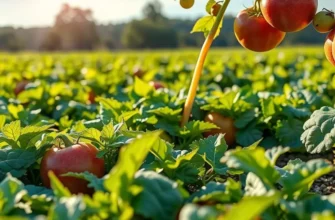Grilling is a beloved summer activity, providing delicious meals and cherished memories. However, it’s crucial to prioritize safety, ensure proper food storage, and minimize waste. By implementing smart food management techniques, you can enjoy grilling while protecting your family’s health and the environment. This guide offers practical tips to enhance your grilling experience by focusing on safe practices and effective food management strategies.
Essential Food Safety Tips for Grilling

Grilling can transform ordinary ingredients into mouth-watering meals, but ensuring food safety is key to keeping your gatherings enjoyable. Here are essential tips for safe grilling, covering storage, preparation, and cooking, to help prevent foodborne illnesses.
Begin with proper storage of your ingredients, as this sets the foundation for food safety. Fresh meat, poultry, and seafood should be stored in a refrigerator below 40°F (4°C) until it’s time to grill. When marinating meats, always use non-reactive containers and avoid keeping them at room temperature. A great practice is to dedicate specific fridge space for marinating to prevent cross-contamination.
Preparation is another critical step. Always wash your hands with soap and water before and after handling raw meats. Use separate cutting boards and utensils for raw and cooked food to prevent cross-contamination. According to health experts, even wooden or bamboo cutting boards, if scrubbed regularly, can be safer than plastic when suitable for a hot rinse.
Timing is vital when you’re ready to grill. Ensure your grill reaches the proper temperature before placing any food. The ideal heat prevents bacterial growth and ensures even cooking. A food thermometer is indispensable here. Ensure poultry reaches an internal temperature of 165°F (73.8°C), ground meats like beef and pork reach 160°F (71.1°C), and steaks or chops hit 145°F (62.8°C).
Turning to technique, avoid cooking by just judging color or texture. These are not reliable indicators of food safety. Make small incisions into the meat to check for clear juices if in doubt.
Once the grilling is complete, employ prompt serving and careful management of leftovers. Hot food should be kept at 140°F (60°C) or higher until served. Use chafing dishes, warming trays, or slow cookers to maintain this temperature outdoors.
For leftovers, implement safe cooling practices. Divide large portions into smaller containers for rapid cooling within two hours. Place these containers at a depth that allows the refrigerator air to circulate effectively. If you’re interested in further exploring efficient cooling methods and waste reduction, you can delve into tips on safer storage of sauces.
Finally, maintain good hygiene around the grill. Regularly clean the grilling equipment to prevent the buildup of grease or food residue, which can harbor harmful bacteria. Grill scrapers and a mix of water and vinegar can help in maintaining cleanliness.
By implementing these strategies, you can elevate your grilling game while ensuring it remains a safe and enjoyable experience. Remember, attention to detail and preparation not only enhances flavor but safeguards the health of everyone sharing your delicious creations.
Maximizing Freshness: Smart Food Management Techniques

Grilling offers a unique culinary experience, but achieving maximum flavor starts long before food hits the grill. An integral part of this process is managing food to retain its freshness while minimizing waste.
One of the best ways to keep your ingredients fresh is to invest time in proper food storage. Begin by refrigerating perishables promptly. Meats, in particular, should be stored at the coldest part of your fridge to prevent bacterial growth. Consider vacuum-sealing meats and other items you plan to grill later. This not only locks in flavor but significantly extends shelf life by reducing exposure to air.
For vegetables and greens, keeping them crisp until grill time is crucial. Store them in crisper drawers with adjustable humidity settings that correspond to each type of produce. Adding absorbent pads or paper towels can help regulate moisture and prevent spoilage.
Minimizing waste is another critical component of smart food management. Meal planning is a powerful tool here. By plotting out future grill sessions, you can ensure that you purchase only what you need. It’s not just about meats and vegetables; consider how practical ingredient batching can assist in utilizing your pantry staples more efficiently. For instance, if you’re preparing marinades, make bulk quantities to use throughout the week.
Did you know effective food prep could significantly reduce waste? Trimming vegetables and meats before you start grilling cuts down on scraps that end up trashed. Repurpose these trimmings into broths and stocks, which add flavor depth to other dishes and reduce waste.
After grilling, food management plays an essential role in maintaining freshness. Cool leftovers quickly to prevent bacterial growth. Use shallow containers, allowing air to circulate and cool the food evenly. Proper labeling, including dates and contents, helps ensure you consume these leftovers in a timely manner, minimizing spoilage.
Exploring composting is another excellent way to minimize waste from grilling sessions. Vegetable scraps and unused parts can enrich the soil for home gardening, providing a sustainable cycle of growth and consumption.
Understanding safe food storage and reducing waste not only maximizes freshness but is also an ecologically sound practice. Implementing these smart techniques supports a flavorful and sustainable grilling experience. For further guidance on eco-friendly kitchen practices, explore eco-smart kitchen storage, which complements sustainable efforts at home.
Every step you take to manage food effectively not only enhances the taste of your grilled dishes but also ensures a mindful approach to ingredient use. By integrating these practices, you embrace a harmonious grilling lifestyle, focused on sustainability and flavor maximization.
Final words
Grilling is an enjoyable activity that can also be safe and sustainable. By following essential food safety practices and adopting smart food management techniques, you can significantly reduce the risk of foodborne illnesses while minimizing waste. Always store ingredients properly and utilize leftovers creatively to make the most of your meals. With these straightforward strategies, you can elevate your grilling experience and contribute to a safer, more efficient kitchen environment. So fire up the grill, apply these tips, and enjoy a delicious, waste-free feast with friends and family!







